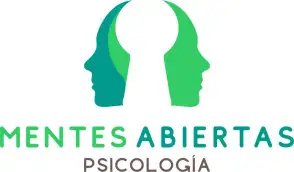What if the way you breathe were as unique as your fingerprint? A recent study published in Current Biology reveals that every human being has a distinctive nasal breathing pattern—so unique that it can serve as a personal identifier. But beyond its biometric potential, this discovery opens a fascinating therapeutic door: understanding how the rhythm of our breath both reflects and shapes our emotional and mental states.
What Is the “Respiratory Fingerprint”?
The respiratory fingerprint refers to the characteristic flow of air through our nose during breathing. According to the study by Soroka and colleagues, it’s a stable, individual, and persistent signal over time. In other words, each person breathes with a specific rhythm, depth, frequency, and nasal symmetry that remains consistent—even across multiple days.
Using wearable sensors placed on the nose, researchers collected continuous nasal airflow data from participants over 24-hour periods. They then analyzed these signals like a unique melody: with subtle variations, repetitive patterns, and pauses, revealing a true “breathing signature.”
Breathing as an Identifier: Biometric Implications
This discovery holds groundbreaking potential for personal identification. Traditional biometrics have relied on fingerprints, iris scans, or voice recognition—but breathing provides a non-invasive, real-time alternative. Imagine unlocking your phone or accessing your bank account simply by breathing near a sensor, or monitoring hospital patients during sleep with alerts triggered if their breathing pattern changes.
But… What Does This Have to Do with Psychotherapy?
A lot. If breathing is so unique, it can also serve as a direct gateway to our innermost selves: our emotions, stress levels, and trauma. In therapy, breathing is already a key tool, and this finding reinforces its importance.
Breathing as an Emotional Mirror
For millennia, traditions like yoga, meditation, and contemplative practices have recognized the power of the breath. Modern science confirms it: subtle changes in breathing patterns correlate with anxiety, depression, hyperarousal, or relaxation.
In this context, the respiratory fingerprint can be understood as an “emotional ECG.” If my baseline pattern shifts, it could signal internal changes—even before I consciously notice them.
Practical Therapeutic Applications
1. Early Detection of Chronic Stress or Anxiety Disorders
A shallower, less variable, or more irregular breathing pattern might indicate an overactive sympathetic nervous system. This could allow early detection of generalized anxiety or burnout—before physical symptoms appear.
2. Personalized Respiratory Biofeedback
By monitoring the respiratory fingerprint during sessions, therapists can offer real-time feedback, helping clients recognize maladaptive breathing (e.g., hyperventilation, breath-holding, nasal asymmetry) and train more regulating patterns.
3. Mindfulness and Self-Connection
Becoming aware of one’s own breathing pattern can help individuals reconnect with themselves. Many clients say, “I don’t realize I’m anxious until I can’t catch my breath.” Sensors that measure breathing could help them notice these warning signs sooner, allowing for proactive regulation.
4. Tailored Conscious-Breathing Interventions
Techniques like heart coherence, pranayama, or breathing meditation become more effective when aligned with an individual’s unique respiratory fingerprint—such as matching their natural inhale-exhale rhythm.
How to Work with This in Therapy
From an integrative therapeutic perspective, breathing can become a central axis of treatment. Here are practical suggestions for therapists:
- Record the client’s baseline breathing pattern during the first sessions (both at rest and during emotional activation).
- Help clients identify their “breathing alerts”—Do they sigh often? Hold their breath when speaking? Breathe through the mouth? Are they aware of which nostril is more active?
- Introduce tailored breathing exercises: 4-7-8, alternate nostril, box breathing, etc.
- Use metaphors that tie breathing patterns to emotional experiences (“Your breathing is like your emotional fingerprint”).
- In trauma-focused work, integrate breathing into bilateral stimulation protocols (e.g., EMDR or somatic EMDR), allowing clients to observe physiological changes as part of adaptive processing.
Breathing and Nervous System Regulation
The vagus nerve, a key player in the parasympathetic nervous system, is activated by slow, deep, diaphragmatic breathing. When we perceive danger, our breathing shifts to a faster, chest-focused pattern—adaptive in the short term but dysregulating if chronic.
Restoring a healthy breathing pattern can “calm the system” effectively and accessibly—no complex techniques needed. And if we know each person’s natural breathing fingerprint, we can tailor exercises to them specifically.
Limitations and Caveats
As with any scientific advance, this study has limits:
- The sample size is small and needs replication across more diverse populations.
- Environmental factors (e.g., temperature, body position during sleep, nasal congestion) can alter measurements.
- The necessary technology is not yet widely available in most therapy offices.
Still, despite these challenges, the horizon is promising.
Conclusion: Your Breathing Tells Your Story
Breathing is not just an automatic act that keeps us alive—it’s also a profound expression of who we are, how we feel, and how we inhabit the world. Discovering that a “respiratory fingerprint” exists reminds us that even the most mundane actions can reveal our essence.
In therapy, this knowledge can help us listen more attentively, intervene more precisely, and support people in reconnecting with their bodies and internal rhythms. Because perhaps, in the end, healing begins with returning to the way we truly breathe.
Based on the study “The nasal airflow signal contains a stable and person-specific respiratory fingerprint,” published in Current Biology, June 2025.


